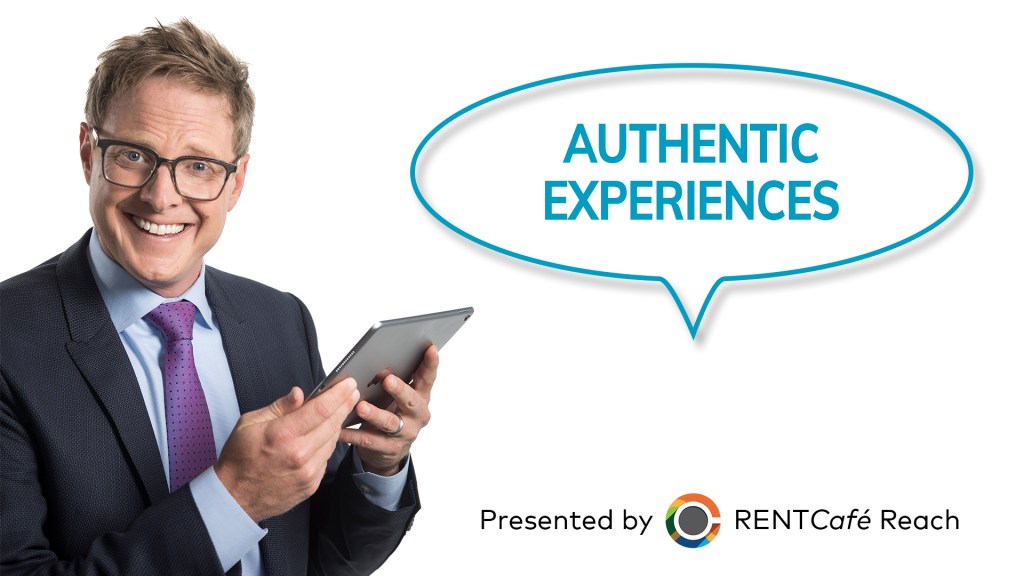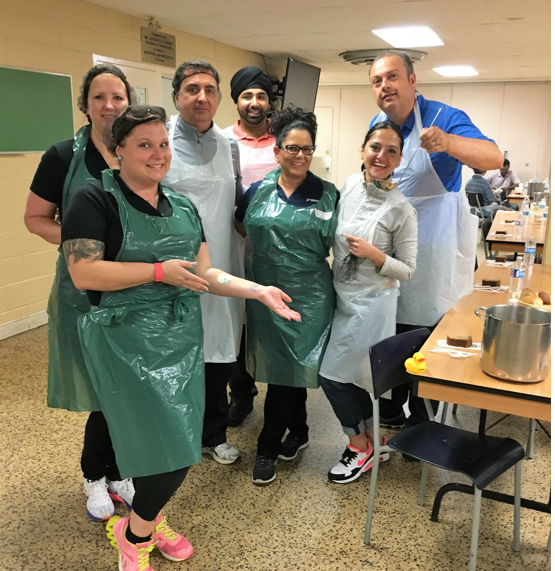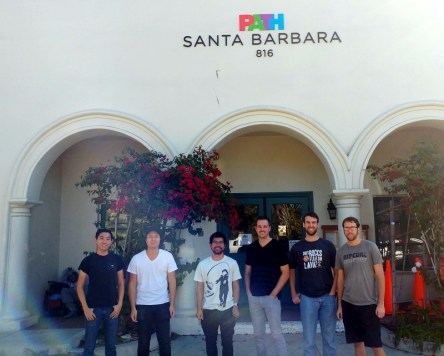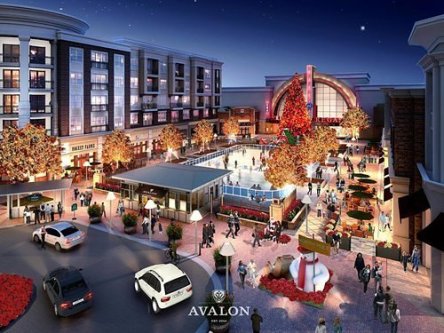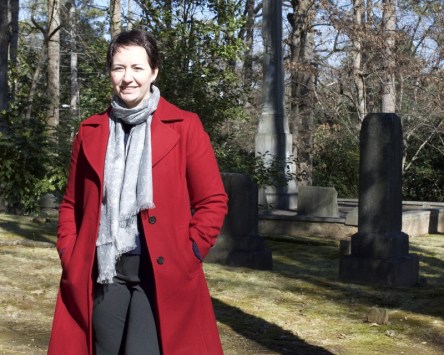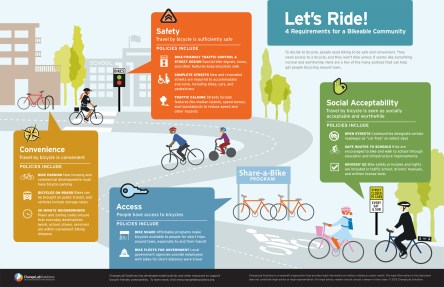Recent world events surrounding COVID-19 have led us all to adopt new consumer behaviors, and it’s likely that many of these behaviors will stick. With that in mind, it might be time for us to revisit our approach to apartment tours. Did you know that 80% of renters seriously considered just four or fewer properties during their last apartment search, according to the 2020 NMHC/Kingsley Apartment Resident Preferences Report? And 38% of renters only toured one or two communities before making their rental decision. That number is likely to grow now that we’ve all grown accustomed to doing more online. So how do you get your property on renters’ short list — especially now that they’re more likely to be influenced by online content than in-person experiences — and secure more tours? Keep reading for three data-driven tips for getting more property tours, whether virtual, self-guided or led by an agent. Then, watch a video from our “Moments of Genius with Drew Davis” series to learn how you can create a better virtual experience to attract renters who are actively searching for apartments. Provide unit-level photos & details Renters in the same survey were asked, “What would you need to see online to rent an apartment without seeing it in person?” The top three answers were: 83% said unit photos 64% said community/amenity photos 64% said unit location within the community That’s right. Just like other online purchases, your prospects want to see exactly what they’re getting for their money. To get them to tour (or lease online, sight unseen), you need to make sure that your property website is attractive, user friendly and full of pictures, including an accurate property map. Unit-level photos and video tours create an experience that not only shows the unit but also builds a foundation of trust for your brand and leasing associates. Additionally, property maps with unit-specific locations help prospects envision life in their new home on your property. Are they close to the pool? Do they have a sunset view? The more supporting material you can provide, the quicker prospects will be able to mentally move-in. “Did you know that roughly 60% of searches are mobile? That means a lot of web visitors are viewing your site on their phones,” said Catriona Orosco, director for RENTCafé Reach. “Be sure to include vertical photos as well as horizontal ones to give them a better viewing experience.” Add online appointment scheduling & tour options 80% of renters said they would use online appointment scheduling in their next apartment search. Online appointment scheduling accommodates busy renters who don’t have time or simply don’t want to call during office hours. After all, consumers are used to booking everything from restaurant reservations to DMV appointments online. Data shows that self-scheduled appointments convert at a high rate. In fact, QuadReal, a RENTCafé client, found that 33% of its self-made appointments converted to leases. Additionally, another 59% of surveyed renters said they wanted self-navigated virtual tours, and 26% wanted real-time video tours done through FaceTime or a similar service. Adding these options to your website or as part of your leasing agent follow-ups will help you meet the needs of a greater range of renters. Offer self-guided tours Of the 370,000 survey participants in the NMHC study, 16% of renters said they would prefer a self-guided tour, while another 15% indicated no preference between self-guided or community-staffed tours. That’s almost 115,000 prospects who would happily tour your property unguided, expanding your tour offerings and giving your staff more time to assist guests and residents with urgent needs. And that study happened pre-pandemic. A more recent survey of 4,974 apartment shoppers on RentCafe.com revealed that 70% would take a self-guided tour now. Why do some prospects prefer self-guided tours? Their responses were almost equally divided between these four reasons: It’s more convenient for their schedule (to book tours outside...
Leading with Action
Yardi clients stand out
“Adversity does not build character. It reveals it.” Those words from James Lane Allen have resonated with readers for years. As we face challenges, our true nature is exposed. Yardi is proud to share the stories of several clients that have supported residents, built community and exercised leadership during this difficult time. Employee and resident support The Bridge Employee Emergency Support Initiative to Aid Employees Amidst COVID-19 details support services for team members. Bridge has offered to pay employees’ regular salary or hourly pay during their absence from work due to COVID-19 illness, self-quarantine, or to care for COVID-19-infected family members. The aid supports employees who can work remotely as well as those who cannot. This Initiative exceeds the requirements stated in The Families First Coronavirus Response Act for companies with less than 500 employees. It supplements current Bridge protocols regarding teleworking and enhances the organization’s protective measures for employees and residents. Bridge Investment Group multifamily residents are eligible for the COVID-19 Financial Hardship Assistance Program. Residents can contact property staff to negotiate a rent payment plan suitable for their financial condition. The plans may include deferrals, lease extensions, and renewal opportunities. Bridge will not pursue any evictions for the non-payment of rent during the crisis. “We do not want any resident to be concerned that they will be without a home during this pandemic,” states a recent Bridge press release. Hope through health and fitness To help residents cope with shelter in place practices, Bozzuto has introduced #BozzutoStaysHome, a virtual event series committed to bringing a sense of sanctuary to residents. “Sanctuary means many different things, but at the heart of it is a place where you feel at peace, where you can be yourself,” says Nicole J. Wells, content marketing manager, digital marketing and strategy with Bozzuto. “Prior to scheduling any activities, we first surveyed our residents to learn what topics were of true interest. Wellness and fitness were among the top areas. It’s natural that the place where you are at peace, where you can be your full self, would incorporate movement. Whether through dance, fitness or yoga, you are free to express and be,” says Wells. The #BozzutoStaysHome series emphasizes the importance of physical movement and fitness as a tool to release stress and maintain health. Sessions include yoga, functional movement, and dance resources. The multifamily housing provider also created the Flamingo 21-Day Virtual Wellness Challenge. Residents are encouraged to participate in home workouts. They can then post photos and encourage their fellow renters. Participants earn points that will be used to calculate rewards which include a party thrown by Flamingo—once shelter in place mandates are lifted– and year of free housekeeping services or personal training. In May, Bozzuto encourages residents to join A Wider Circle’s Virtual Race to End Poverty on May 16. Residents can sign up to exercise at a specific time to raise funds and awareness for A Wider Circle. The nonprofit focuses on emergency and long-term solutions for housing and food insecurity. Finding normalcy while sheltering in place Lincoln Property Company (LPC) has kept the atmosphere light by providing ways that residents can make sheltering in place feel more natural. Via social media, LPC shares content from their blog and sites such as Apartment Therapy to give residents tips on sheltering in place. Such resources include a guide to working from home, a list of the most versatile workout apps, bonding activities to do over teleconferencing apps, and quick meals for days when residents feel overloaded. The housing provider is also hosting the #LPCHomeTogether contest. Residents can submit pictures of how they’re making the most of their extended time at home. Submission ideas include pictures of DIY projects, workouts, and family games. Each week, LPC choses a winner who will receive a $50 Amazon gift card. LPC resident relief efforts include options for payment plans and other policies to lessen financial...
Creating Community
Bringing Residents Together Online
Traditionally, creating a sense of community has been a great way to make residents feel at home, leading to positive reviews, referrals and increased renewals. Multifamily properties host happy hours, movie nights and exercise classes to help renters connect with each other and the property team. They create and update shared spaces and amenities to make sure they are comfortable and welcoming. But how do you create a sense of community when people can’t gather? Property managers everywhere are asking this question now because of the social distancing measures put in place during the COVID-19 pandemic. We’re here to help. First, watch a video from our new “Moments of Genius with Drew Davis” series to get creative community building tips you can use right now. Then, see what the award-winning team at Bozzuto is doing. And finally, discover tech tools that can help bring your residents and team members together. 6 Creative Ideas Watch this short, five-minute video from Drew Davis to learn six creative ways and four key principles to foster community at your properties — even when we can’t all be in the same place. Drew is one of the world’s top marketing experts. He is working closely with us to share monthly tips specific to property management as we navigate this rapidly changing market together. Wasn’t that fun and inspiring? Drew is just the shot of positive energy we need right now, and we’re excited to see what he has in store for us. Subscribe to “Moments of Genius” now to see new episodes when they’re released. #BozzutoStaysHome When stay-at-home orders started getting handed down, the team at Bozzuto knew they had to spring into action. “We asked ourselves, ‘How do we continue to provide value to our residents when they can’t use the amenities?’” said Nicole Wells, content marketing manager for digital marketing and strategy at Bozzuto. #BozzutoStaysHome was the result, an online program that connects residents, includes the community and celebrates the idea of sanctuary, ultimately promoting shelter-in-place behaviors to flatten the curve. It includes a calendar of weekly virtual events led by community partners like yoga classes and cooking demonstrations as well as curated playlists designed to lift spirits and nurture a sense of connection. Events are shared live on Facebook and Instagram. Facebook Live events like this Vinyasa yoga class are recorded and shared so anyone can watch anytime, racking up hundreds of views. “To get started, we put together a cross-team task force. We asked our residents what they wanted to see,” shared Wells. Once the concept started coming together, “We created assets for our communities to use so they don’t have to do that extra work themselves. They already have enough to focus on right now.” With more than 400 posts using the hashtag on Instagram in just a few weeks and hundreds of viewers to their live and recorded events, #BozzutoStaysHome is picking up traction. “Bozzuto is helping residents engage in a little bit of fun at home during quarantine,” said Wells. “They’re receptive to that, and we’re happy to be a bright spot.” Tech That Connects People can’t participate in your community engagement efforts if they don’t know about them. In the words of Drew Davis, “Make sure your residents know where to go for the latest information about your property and the fun things you’re doing to keep people safe and connected.” With the RENTCafé resident portal and RENTCafé Resident app, you can quickly and easily share information about social distancing efforts and upcoming online events. You can post events to your community calendar and bulletin board, send survey emails and even schedule push notifications if your residents have opted in on the app. Both the portal and the app help your team stay connected while cutting down on face-to-face interactions by taking communications, payments and work orders online. With a 4.8 star rating and more than...
7 Ways to Earn Loyalty
During Social Distancing
Social distancing is a necessary yet challenging directive for apartment communities. We must build a sense of community and safety if we want to earn resident satisfaction and loyalty. But social distancing practices don’t exactly conjure warm, fuzzy feelings. We’ve got seven tips for maintaining resident satisfaction and earning loyalty even when keeping your distance. Check on your seniors and vulnerable residents. Call vulnerable renters to make sure that they have the essentials. They will appreciate knowing that you have their wellbeing in mind, even if they’re already taken care of. If they are in need, consider either of the options below to help. Receive donations and stock up for those in need. In times of panic, many people naturally think of self-preservation. Acts of altruism shine brightest during these times! Place a large box outside of the office and invite residents to make food and toiletry donations for those within the community who need it most. Pre-package items can be easily wiped down before distribution. As a business, you may also have wholesale access to resources that are not available in stores. Consider stocking up on essential items for residents in need. It’s a small investment to make to earn resident gratitude, respect, and loyalty. Share community updates and best practices. Use your online resident portal to issue updates by your local health centers, especially any news or tips that are empowering and uplifting. Be sure to cite your sources and provide links when you can. This step encourages residents to get information from credible sources. Inform residents of your measures to sanitize the property. As your property takes additional measures to sanitize the site, inform your residents and prospects. They will appreciate that you are prioritizing their wellness and taking care of staff health. Host online gatherings. It’s important to support a sense of community even when you can’t congregate in groups. Shift community events to online platforms instead! Watch movies and TV shows together on viewing apps and online networks like Watch2gether. Attendees can make comments and share reactions just like in a live setting. Do your best to accommodate those with extenuating circumstances. Technology has enabled many people to work from home. There are some who cannot, particularly those in the service and hospitality sectors. They may not be able to work and may temporarily struggle with rent. Organize and communicate efforts to accommodate renters with extreme circumstances. Compassion during tough times will be remembered during lease renewals. Encourage online payments and online maintenance requests. This is a smooth way to discourage unnecessary visits to the office staff while highlighting conveniences that you’ve made available for residents. If leasing office or maintenance protocols have changed, clearly communicate those changes with renters. When you go above and beyond to support residents during challenging times, they will remember your efforts during lease renewal time. Watch this quick video to learn how the Excelsior Group uses technology to stay engaged with...
Senior Wellness
Community Connections
Socialization is a significant part of senior wellness. By getting the members of the neighborhood involved in activities at your community, you’re offering healthful, value-add services for your seniors that truly make a difference! Below are a few suggestions on how you can improve social opportunities with community support. Animal shelter collaborations are a fun way to expose seniors to the joys of pets without the daily responsibilities of pet ownership. Seniors are able to play with and cuddle their new furry friends, reaping the health benefits of pet interactions. Girl and Boy Scouts projects offer seniors the opportunity to teach and learn from local youth. Contact your local chapters regarding projects such as building raised garden beds, installing rainwater recycling systems, or beautification projects. When seniors have experience in these areas, they are able to feel helpful and knowledgeable. When the experiences are new, senior learners stimulate their brains and feel the invigoration of developing new skills. Student-led tech classes equip seniors with the basic skills needed to stay in touch with the world beyond their senior community. Navigating Zoom and Facetime, for example, allow seniors to stay in touch with loved ones. Computer skills classes make it easier for seniors to take charge of their care curriculum. For today’s students, these skills are second hand and a fun way to get the community service hours they may need for school. Trips to a local ranch for equine therapy come with several advantages: a scenic trip to rural area, the benefits of equine therapy, and the pleasure of artwork and animal interaction. Don’t worry—equine therapy does not mean your seniors must mount the horses! Ask camp leaders if it’s appropriate for seniors to interact with current class members. Serving as a dance recital...
Team Yardi Toronto
Assists at Scott Mission
Team Yardi Toronto recently spent time at The Scott Mission in Toronto, giving back by preparing food for those in need. The Scott Mission has been serving homeless and impoverished Toronto residents since 1941, and has played a major role in helping thousands of people return to safety and stability after living on the street. In addition to meal services, the mission provides nightly shelter for up to 50 homeless men, groceries and clothing for the impoverished, summer camps and childcare, and worship services. The mission’s 100 staff members are joined by 2,500 Toronto community members each year to make these good works possible. On June 20, that included a group of employees from Yardi Canada. “This was a team building experience as well as a very humbling way to give back to the community,” said Lee Anne Lippa, an application solutions consultant from the Toronto office. “It left us with added appreciation for our surroundings of health, family, friends, colleagues, our place to work, home to live in and the food on our table.” The Yardi team, led by senior account executive Shirleen Vieira, participated in food and dessert preparation, setting tables for two lunch servings, and a final clean up. “They serve balanced meals,” Lippa noted. “We had chicken wings, baked potato, hard-boiled egg and salad. Others that were vegetarian with baked potato, salad, hard-boiled egg, salad and grilled eggplant and zucchini.” They served lunch to the shelter guests – which included people of all ages – with courtesy and respect for those coming to eat, which is a focus of the organization’s Christian values. Drawing from the Yardi corporate values, which include giving back to the community, the Toronto offices encourages other Yardi colleagues globally to give back in similar fashion....
Helping the Homeless
Yardi Staff at PATH
The Voyager Front Line Residential Santa Barbara teams joined forces to volunteer at PATH Santa Barbara last week in the tradition of Yardi’s commitment to the community. PATH is a non-profit organization which addresses homelessness for individuals and the community. It provides services to improve their health, increase their income, and transition to stable housing. “We had a great time sorting vegetables, fruits, breads and desserts. We also helped clean the tables and set up the food. Most especially, we enjoyed serving great food to our less fortunate brothers and sisters,” said Jomel Esleta, Team Leader, CSD. “We can see the happiness in their faces when they saw the team helping out and received non-stop ‘thank yous’ from all of them,” Esleta said. “It always feels great to help other people,” said team member Evan Hamilton. In addition to Esleta and Hamilton, Yardi employees Brandon Paul, Ryan Daley, Baron Wei, Richard Ngoy and Allen Shelledy spent four hours on a Saturday at PATH. The PATH community kitchen is open 365 days a year and serves other local agencies that assist the homeless, including Common Ground, Giving Tree, Presbyterian Church, Rescue Mission, Salvation Army, Stalwart House, WillBridge, and Unity Shoppe. For information iabout volunteering at PATH in Santa Barbara, visit this...
Community Gardens
Investment Insights
As a gardener, I took personal interest in the community gardens popping up throughout the US. I expected to find plenty of resources on the practicality and returns on such projects. Unfortunately, I had no such luck. What I’ve found, though, may help you determine if a community garden is a worthwhile addition to your multifamily property. We can begin with the question that is likely in the forefront of your mind, “What will it cost me?” That answer depends on several factors. Primarily, the costs of the garden depends on its size and the materials used. Rot- and pest- resistant cedar wood will cost more than pressure treated wood, for example. When using local, recycled wood, you may just pay for transportation. Then your costs will vary based upon how the apartment garden is established. In most cases, the site is responsible for the installation. The site furnishes irrigation, a few tools, and perhaps the first season of plants (since an active garden is an easier sell than bare earth). With greater involvement, the costs increase to accommodate maintenance of the site, perhaps a part-time gardener or additional time on the clock for maintenance techs. The potential returns also depend on whether or not residents pay a fee for using plots, or whether they are offered without charge. With those factors in mind, it is impossible to pinpoint the exact costs and returns for a community garden. But the following information may give you a ballpark idea of a garden’s value. “We’ve had our community garden for several years now,” says Vanessa Jackson, Leasing Consultant at Greystone Farms Apartments in Columbus, GA. “Honestly, most people don’t come in asking about it. But once we drive them around the property and we point it...
What’s in a Name?...
A lot, for apartments
It’s important to think through all the possibilities before you name your community. You don’t want to turn off potential renters. Bart: He lied about his name! Lisa: His name doesn’t matter, a rose by any other name would smell as sweet. Bart: Not if you called him Stench Blossom. Homer: Or Crap Weed. —The Simpsons Names don’t determine the personality traits of a person, but they do matter. And people do judge you by your name, even if it’s subconsciously. That’s why I didn’t name my daughter Kandy Kane Fiur. There will never be a supreme court justice named Kandy Kane (probably). The same goes for apartment communities. People put a lot of effort into naming their communities, which is why it’s sometimes baffling when you see communities that have names that could possibly be misconstrued. And it’s not just trying to avoid names that are offensive to people, which should be an obvious thing to do, but it’s looking in context. Take, for example, Plantation Flats. This name, in and of itself, isn’t so terrible. In fact, it’s kind of nice. But it’s a community located in South Carolina, which, for some people could have some negative connotations when they think of the name. Especially with all the controversy going on there right now. Maybe I’m just sensitive. (I mean, I did just bawl through the newest Pixar movie Inside Out, but, to be fair, I had just run out of popcorn, which definitely isn’t OK!) But it’s important to consider every possible meaning and association with a name before slapping it on a building. Be careful not to offend anyone or turn off potential renters. When naming a community, you should also think of the name’s longevity. For me at least, when apartment communities...
Renting to Millennials...
What You Know is Wrong
You know all of those reports on Millennials and their love for tiny, urban spaces in walkable communities? They might be wrong. It turns out that Millennials value space and authenticity more than we previously believed—and the two rarely go hand-in-hand. A recent study suggests that while Millennials do enjoy their apartments in urban environments, they’re willing to leave rentals behind for more spacious accommodations. The BUILDER Responsive Home project reveals that young adults enjoy the amenities that urban living provides, but they crave more space. Of the participants surveyed, 83 percent said more space is the biggest motivator to purchase a home. Unfortunately, 61 percent admit that they cannot afford a home. The report suggests something that many have suspected for a while: Millennials want it all while paying next to nothing. They want airy homes in walkable neighborhoods. Easy access to recreation, shops, and restaurants should not interfere with nearby sprawling green spaces, trails and outdoor activities. When competing for the 61 percent of renters who cannot afford a home, one of the biggest challenges for multifamily firms is to figure out how to offer the most spacious living, in walkable areas, that Millennials can afford. Business Insider reports that the average median income for male Millennials is $35,000 per year and $31,069 for females. This generation doesn’t have tons of cash tucked away, either. A survey conducted by the Federal Reserve Survey of Consumer Finances indicates that the average Millennial has a net worth of $10,400. Since most Millennials do spend less than 30 percent of their annual income on housing, they don’t have much to spend on housing relative to the tall orders that they’re placing. Simply telling the Millennials, “tough luck,” won’t cut it. Some multifamily builders have chosen...
Waterfowl Invasion
Ducking Ducks and Geese
If you find waterfowl descending upon your property twice a year, you are not alone. There are thousands of multifamily properties just like you that are unfortunate enough to rest along waterfowl flyways. You are not alone. We are here to help. Unless you’re a hunter, you probably didn’t notice the release of the 2015 Waterfowl Breeding Population and Habitat Survey. What you will want to know—and would probably figure out sooner than later—is that waterfowl are about to take over your world. The survey revealed that the estimated duck population in the US is 49.5 million. That’s 43 percent above the long-term average. For multifamily properties within the waterfowl migration path, that means that you will have an increase in residents between now and November. They will not give you rent money. Instead, they will block traffic each day with their adorable duck parades. They will ruin your residents’ picnics, chasing them for even the tiniest morsel of bread. (Those are likely spoiled harbor birds from New England. They can’t help themselves.) They will leave so much poop throughout your property that you will pray for more dogs. Each morning they will quack, quack, quack until you pull your hair out from the roots. What’s worse, residents and their kids may try to befriend the waterfowl. They may even try to pet them and swim with them. This can lead to the transfer of nasty parasites. You don’t have to be a victim of the pending waterfowl invasion. Take these measures to make their stay more bearable and maybe keep them from visiting altogether. Don’t feed the ducks or geese. As you may notice, pampered, entitled geese are the most insufferable geese. Secondly, human food is terribly unhealthy for waterfowl. Bread and crackers...
Bettering Buckhead
A community in transformation
It’s never too late to improve livability. Buckhead, an affluent and well-developed Atlanta submarket, demonstrates that notable change can be made even in established areas. Green space and cultural engagement are key to the transitioning community’s success. Markets experiencing the strongest, most sustainable growth these days are those where residents can work, live, and play in pedestrian-friendly communities. Ownership of a single-family home, an automobile, and long commutes from the suburbs don’t rank high on Millennials’ lists. Instead, they trend towards pedestrian neighborhoods with alternative transportation, active street scenes, and an emphasis on environmental stewardship. Buckhead fell woefully short in many of these areas. The submarket gained a reputation throughout metro Atlanta for its sprawling estates and commercial success but it was decidedly unapproachable and in many potential residents’ eyes, unlivable. Without major changes, Buckhead would sabotage its own growth and vitality. One spark initiated the necessary changes. In 2011, Denise Starling received a daunting task. The Executive Director at Livable Buckhead found herself facing a green space deficit and a demand for change. “Howard Shook is our councilman and he came to us and said ‘City of Atlanta just did this plan that identified my district as the lowest parked in the entire city of Atlanta. That can’t be. Go fix it!’ He literally said, ‘Go fix it!’” Starling laughs. “We’re like…alright. So that’s basically how we started a green space plan.” The councilman was right. At the time, the Community Improvement District, Buckhead’s commercial center, had only 2.14 acres of green space per thousand people. The standard is 15 acres. Establishing parks became the organization’s primary objective. Walkability was also a sought-after feature that Buckhead lacked. At the time, WalkScore dubbed the area as “car dependent,” entailing that most residents had to...
Building Community
Winter Event Ideas
The warm weather months are kind to leasing agents. Residents don’t need much incentive to come to the outdoor community parties. The colder months, however, can bring the fun of an active community to a grinding halt. How and where can onsite staff host resident events during the colder months? We’ve got four fun community event ideas that are indoors, affordable, and sure to build a sense of community and belonging for your residents. Lease renewals, anyone? Local Gym During the winter, many people are planning or executing their New Year’s fitness resolutions. Local gyms are eager to recruit new members and you’re eager to find an affordable, fun place to host a party. Pick the best equipped gym near your community and let your interests combine! Work up a deal with your local gym: request free guest passes (which most gyms offer anyway) and you’ll supply their potential, future members. Get residents together for games of basketball, racquetball, or popular Zumba and yoga classes. The more that the gym has to offer, the more opportunities your residents have to bond and maintain their New Year’s resolutions. The best part: residents will likely join the gym and find workout buddies amongst neighbors, adding two more reasons for them to love your community. Aquatic Center Who says you can’t swim in winter? Check out your local aquatic center, often hosted by the county. Many centers, especially those constructed within the last decade, have indoor pools, heated indoor pools, saunas and hot tubs. Space rentals are often quite affordable, especially in the winter when business is slow. All that is left for you to do is supply a few light snacks (because no one wants to swim on a full stomach). Dave and Busters D&B offers...
Bring on Bikeability
Creating cycle-savvy cities
American cities are changing for the better. More pedestrian-friendly cities have popped up in the last decade promoting cleaner air, less traffic, and healthier residents. The option for walking and biking tops renters’ must-have lists and neighborhoods that don’t adapt to this new lifestyle are losing out. Is your property in a bikeable community? What makes a bikeable community? This infographic from Good.Is illustrates the four traits needed for bikeability. If your community has all of these features, then you’re on the right track! You’ll attract Millennials and Baby Boomers alike to your property. If not, you have the power to promote change. But why should you bother? Demand is the largest factor; renters want pedestrian-friendly locations. When renters hear pedestrian-friendly, they also hear: Cleaner air Less traffic Less time in traffic means less stress and more time with family Outdoor fitness options Easier access to shops, services, and parks…and fewer ugly parking decks Money saved! No car, car insurance, or outlandish gas budgets required Money saved means more cash for personal interests Neighborhoods that aren’t bikeable or walkable don’t offer these advantages. They will plummet to the bottom of apartment seekers’ lists when compared to communities that do. To start, you’ll need to rally and unify local residents through education. You will want to connect with organizations such as America Bikes, which advocates for bike and pedestrian initiatives under the federal transportation bill. They can help you with funding, case studies, feasibility studies, and other reports that you will need to inform residents and impress city officials. Organizations such as The League of American Bicyclists and Rails to Trails Conservancy are excellent resources for educational materials and ideas to put existing infrastructure to work. Many offer to send representatives to your community to...
Hurricane Season
Property Protection
With hurricane season in full swing on both coasts, we can all benefit from a refresher on hurricane preparedness for properties and residents. According to the National Weather Service, last year was relatively calm for hurricanes and tropical storms with property damages totaling just over $10 million. That’s a significant amount yet pales in comparison to $172 million in damages in 2012 and billions in recovery costs. Even the most basic planning can prevent costly property damage as well as injury and loss of life. Community safety tips Make sure that employees and residents are familiar with building-specific and community evacuation routes. It’s difficult to host community drills, so a push notification delivered via smartphone, article in the monthly newsletter, or social media post may draw the most attention. In high rise buildings, it is conventional knowledge to evacuate residents to lower floors, where wind conditions are more favorable. But be mindful of flood levels, informing residents to congregate on the appropriate floor that is above threat of water damage and below the worst wind. Interior rooms with fewer windows are favorable to exterior rooms. Keep shrubs and hedges trimmed. Top-heavy plants have a parachute effect in high winds. Keeping them trimmed low can minimize their ability to take flight. Call professional arborists to remove damaged or decaying limbs from trees even if they are not directly over buildings. Branches and limbs are projectiles during hurricanes, increasing the likelihood of injuries and damages. Close the pool and bring in any accessories and patio furniture that are not bolted down. In addition to regular wear and tear during storms, these items may become dangerous projectiles. Ensure that gutters and clean and repaired, especially as fall leaves become more plentiful. A simple clog can exacerbate flooding....

